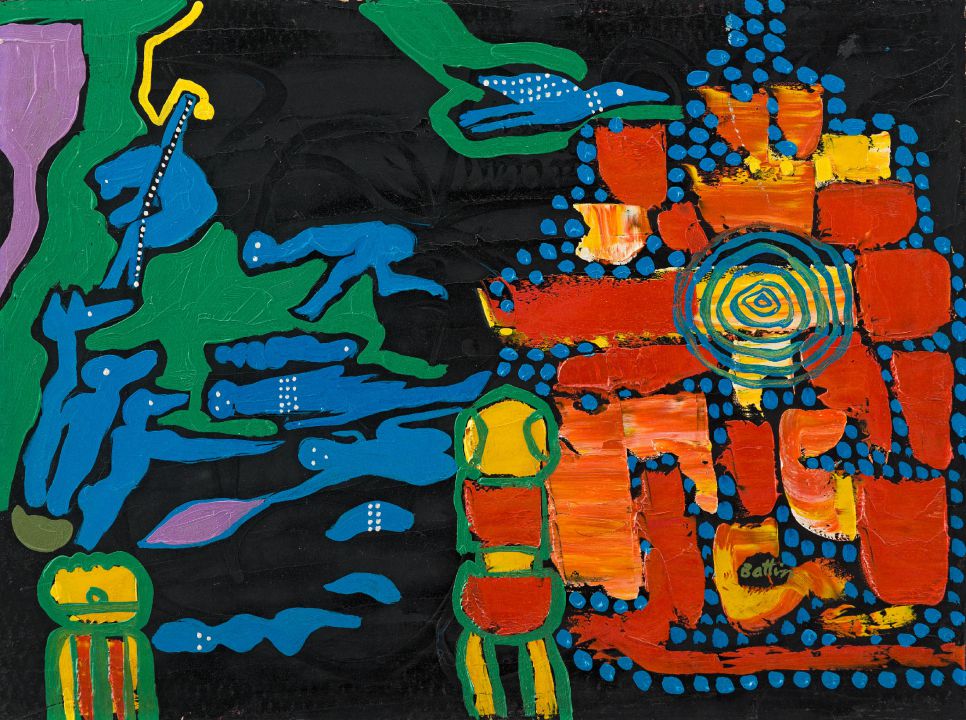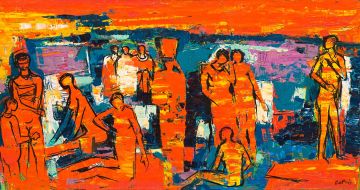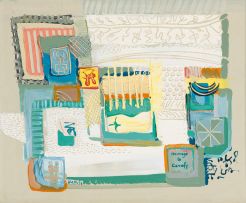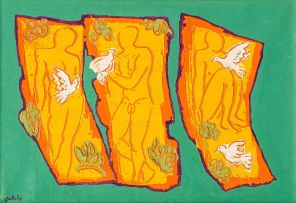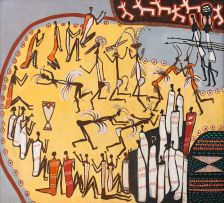Important South African and International Art
Live Auction, 7 November 2016
Evening Sale
Incl. Buyer's Premium & VAT
About this Item
Notes
For Water Battiss collectors, the original oil rendition of the iconic Limpopo holds a special place in the artist's oeuvre. It is the basis for one of Battiss's most recognisable, popular and well-collected screenprints of the same title. Battiss painted the iconic work soon after his return from a series of trips to the Limpopo River in the early 1950s. A decade later, in 1965, when he published his book, Limpopo, the painting was exhibited at Gallery 101 at the Johannesburg launch of the book, where the present owner acquired it.
Although the oil painting and screenprint are almost the same size, the painting reveals extra, noteworthy details and much more information than the print does. Battiss thickly applied paint in certain areas in the oil, while the design is more uniform and simplified in the screenprint. One of the most significant areas of difference is the calligraphic marks in the black areas of the canvas.
Murray Schoonraad recorded that Battiss would he would assimilate his impressions in sketches after his Limpop trips. 'The calligraphic forms, which we have come to see as characteristic of his art, had their origin in a visit to the Limpopo Valley where he copied the interesting roots, shadows and shapes he perceived in the dry riverbed and in the arid veld,' he noted.1 He added that 'these in their turn suggested human and animal figures and even later, an alphabet which he has developed for Fook Island'.2 This idea is developed further by Jack Ginsberg in his essay in Walter Battiss: I Invented Myself, which accompanied the major exhibition at the Mits Art Museum this year. Thus the hidden information in the oil original of Limpopo gains additional significance in the development of Battiss's ideas and in his evolution as an artist.
The work is remarkable in terms of its internal perspectival workings. The right hand side of the painting should be conceived as a view vertically from above, looking down on a fountain, while the left hand side, with its anthropomorphic figures - humans merging into animals - represents a spiritual realm. These perspectives are presumably merged in the consciousness of the elemental figure placed at the centre foreground. The multidimensional reality, synthesising the perspectives of the natural, spiritual and physical realms, are at the heart of Battiss's fusion of rock art and modernism, one of his crowning achievements as an artist.
1 Murray Schoonraad. (1976) Walter Battiss. Cape Town: c. Struik Publishers. Page 12.
2 Ibid.
